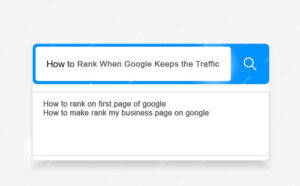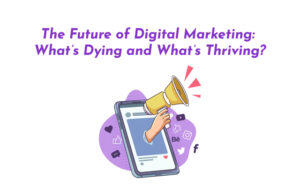The Indian digital marketing landscape is rapidly evolving, shaped by a combination of technological advancements, shifting consumer behavior, and the unique dynamics of the Indian market. In this article, we will delve into the future of Indian digital marketing, exploring key trends and strategies that are poised to define the industry in the coming years.
Introduction
The digital marketing landscape in India has witnessed significant growth over the past decade, driven by factors such as increasing internet penetration, the proliferation of smartphones, and a burgeoning e-commerce ecosystem. As we look ahead, several trends are set to reshape the future of digital marketing in India.
1. Data-Driven Decision Making
Data is the New Oil: Data-driven decision making has already taken root in India. With the adoption of advanced analytics and machine learning, businesses are using data to gain insights into consumer behavior, refine marketing strategies, and enhance personalization.
Statistical Insights: According to a recent survey, 87% of Indian marketers consider data analytics to be crucial for their success.
2. Content Personalization
Beyond Mass Marketing: Mass marketing is making way for hyper-personalization. Indian consumers are increasingly expecting content that is tailored to their preferences. This shift will drive the need for dynamic content and AI-driven personalization engines.
Consumer Engagement: Research shows that 63% of consumers are annoyed by generic advertising, emphasizing the importance of personalized content.
3. Vernacular Content
Speaking the Language: With a diverse linguistic landscape, India is embracing vernacular content. Marketers are focusing on creating content in regional languages to connect with a broader audience.
Market Potential: Vernacular content can potentially expand a brand’s reach to 536 million Indian users who prefer consuming content in regional languages.
4. Voice Search Optimization
Conversational Queries: Voice search is gaining prominence with the rise of voice-activated devices. Optimizing for voice search will be vital as users shift from typed queries to natural language interactions.
Market Share: It’s estimated that voice searches will account for 50% of all online searches by 2025.
5. Video Dominance
Video-First Approach: Video marketing is thriving, with platforms like YouTube and TikTok becoming integral to digital strategies. The demand for video content will continue to surge.
Engagement Factor: Video content is 10 times more engaging than text-based content.
6. Mobile-Centric Marketing
Mobile-First Strategy: India is a mobile-first nation, and this trend will persist. Mobile optimization, responsive designs, and mobile apps will remain at the core of digital marketing strategies.
Mobile Growth: India is expected to have over 1.1 billion mobile users by 2024.
7. Influencer Marketing
Influence at Scale: Collaborating with influencers is an effective way to build trust and reach a broader audience. Influencer marketing will evolve with an emphasis on micro-influencers and authenticity.
Return on Investment: Businesses are earning an average of $6.50 for every $1 spent on influencer marketing.
8. Augmented Reality (AR) and Virtual Reality (VR)
Immersive Experiences: AR and VR technologies are set to transform consumer experiences. Brands will leverage these technologies for virtual try-ons, interactive showrooms, and immersive storytelling.
Market Growth: The AR and VR market in India is projected to reach $1.08 billion by 2025.
9. Data Privacy and Compliance
Protecting User Data: With the introduction of data protection regulations, ensuring data privacy and compliance will be a top priority. Building trust through transparency is key.
Regulatory Landscape: India’s Personal Data Protection Bill is expected to bring a comprehensive framework for data protection.
10. Artificial Intelligence (AI) Integration
Intelligent Marketing: AI and machine learning will continue to optimize ad targeting, chatbots, and content recommendations. The ability to analyze large datasets will be a game-changer.
Enhanced Customer Experiences: AI can help businesses personalize customer experiences, and it’s estimated that 85% of customer interactions will be managed without human intervention by 2021.
Conclusion
The future of Indian digital marketing is poised to be a dynamic and innovative landscape. As marketers and businesses adapt to these evolving trends, the ability to stay agile, data-driven, and user-centric will be crucial for success. Embracing change, investing in emerging technologies, and prioritizing data privacy will be the driving factors in this ever-evolving industry.
The future is bright for Indian digital marketing, and those who navigate these shifts with innovation and adaptability will stand at the forefront of the industry’s transformation.
Feel free to get in touch with us to make your next marketing strategy give you a boost.










